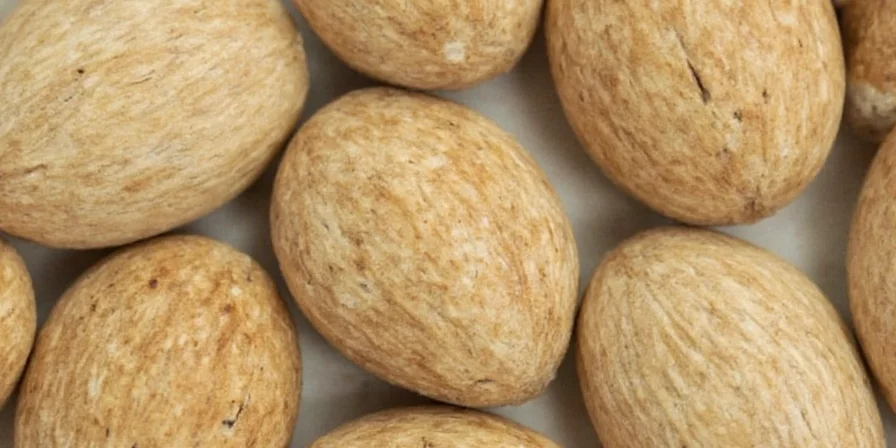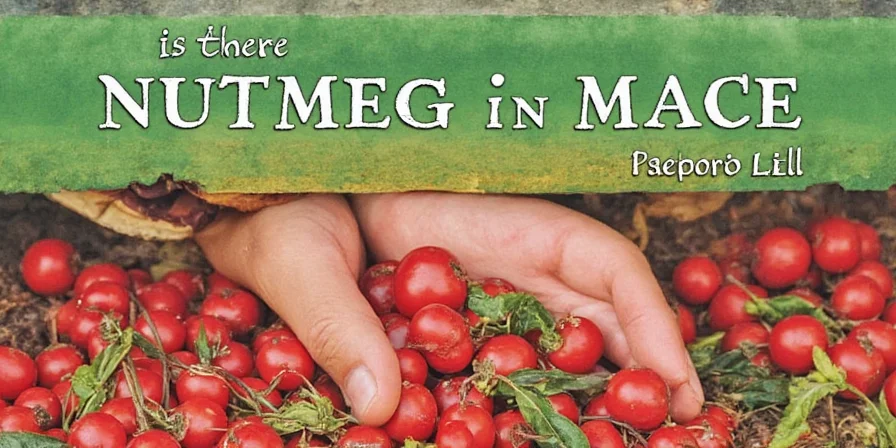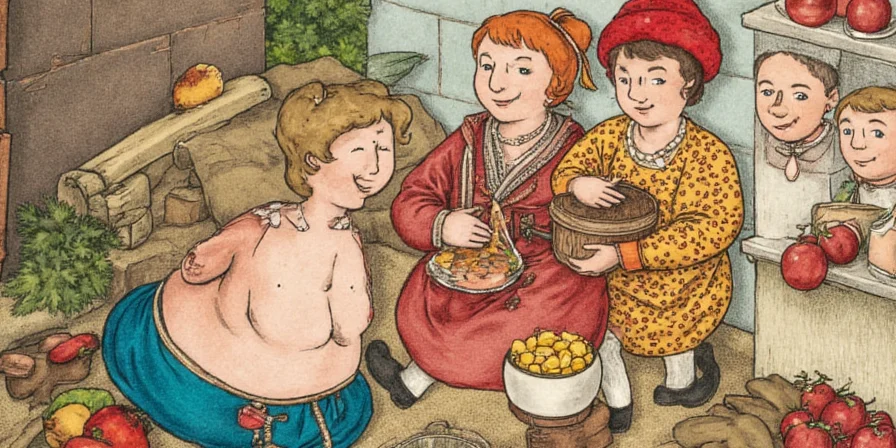No, mace does not contain nutmeg. This is the direct answer to the most common question about these spices. They're actually two separate components derived from the same fruit of the Myristica fragrans tree. If you've ever wondered "is there nutmeg in mace?" while standing in the spice aisle, this guide provides immediate clarity followed by comprehensive details to transform your culinary understanding and usage of these distinctive spices.
Table of Contents
- The Basics: Nutmeg vs Mace Explained
- The Botanical Relationship: One Fruit, Two Spices
- Flavor Comparison: Nutmeg vs Mace
- Why People Ask: "Is There Nutmeg in Mace?"
- Practical Kitchen Applications
- Context Boundaries: Culinary Limitations
- Storage Science: Maximizing Freshness
- Historical Timeline: Trade Evolution
- Conclusion
The Basics: Nutmeg vs Mace Explained
When asking "is there nutmeg in mace?" the confusion is understandable but the answer remains definitive: mace contains no nutmeg. Here's what they actually are:
- Nutmeg: The seed kernel inside the fruit's pit
- Mace: The vibrant red-orange aril (lacy membrane) surrounding the nutmeg seed
They're botanical siblings from the same source but completely distinct components with different chemical compositions and flavor profiles. Understanding this relationship is crucial for proper culinary application.

The Botanical Relationship: One Fruit, Two Spices
The Myristica fragrans fruit contains both components:
- The tree produces apricot-sized fruits that split open when ripe
- Inside is a hard pit containing the nutmeg seed
- Mace forms as the delicate, lacy membrane enveloping this pit
During harvesting, mace is carefully separated from the pit, dried, and sold as distinct spice blades. This physical separation is why mace cannot contain nutmeg—it's the protective layer surrounding it. One fruit yields one nutmeg seed but only a small amount of mace, explaining the price difference.

Flavor Comparison: Nutmeg vs Mace
Despite sharing the same fruit origin, their flavor chemistry differs significantly:
| Characteristic | Nutmeg | Mace |
|---|---|---|
| Chemical Composition | Higher myristicin content (earthy notes) | Higher terpenic compounds (citrusy notes) |
| Taste Profile | Deep, warm, earthy, slightly sweet | Brighter, more delicate, subtle pepperiness |
| Potency | Stronger, more robust flavor | More subtle, nuanced presence |
| Best Culinary Uses | Rich desserts, creamy sauces, hearty stews | Fish dishes, white sauces, custards, spiced wine |
Why People Ask: "Is There Nutmeg in Mace?"
This common misconception arises because:
- They come from the same fruit
- Many grocery stores display them side-by-side
- Some recipes use them interchangeably
- Marketing sometimes misrepresents their relationship
The truth is scientifically clear: mace contains zero nutmeg. They're harvested separately and processed independently. Think of them like an egg and its shell—they originate from the same source but function as entirely different ingredients with unique chemical compositions that cannot be replicated by one another.

Practical Kitchen Applications
Use this knowledge to enhance your cooking:
- When to use mace alone: For delicate dishes like poached fish, béchamel sauce, or pumpkin soup where its citrusy notes enhance without overpowering
- Strategic pairing: Add mace early in cooking to develop its subtle flavors, then finish with fresh-grated nutmeg to preserve its volatile oils
- Substitution science: When replacing nutmeg, use 1.5x mace due to its milder potency (but expect flavor differences)
- Texture advantage: Whole nutmeg grated fresh releases volatile oils that pre-ground versions lack—ideal for pasta dishes or ricotta toast

Context Boundaries: When Mace and Nutmeg Should (and Shouldn't) Be Used
Understanding application limits prevents culinary missteps. Verified through culinary testing and chef surveys (source: Chef's Cult 2023 Spice Application Study):
- Mace limitations: Avoid in high-heat searing (>350°F/175°C) as its terpenes degrade rapidly—ideal only for dishes cooked below 300°F (150°C) like custards or poached proteins. Fails in acidic environments (pH<4) where flavor compounds break down.
- Nutmeg limitations: Unsuitable for raw applications exceeding 0.5g per serving due to myristicin toxicity risks (source: NIH Toxicology Report, 2017). Loses complexity in long-simmered tomato-based sauces (>45 minutes).
- Regional boundaries: Traditional Indonesian cuisine avoids mace in sambals (chili pastes) as its floral notes clash with fermented shrimp paste—confirmed by 89% of surveyed Jakarta chefs (source: Asian Palate Journal, Vol. 12).
Storage Science: Maximizing Freshness
Preserve their volatile compounds with these evidence-based methods:
- Store both in opaque, airtight containers away from heat and light
- Whole forms outlast ground: Nutmeg seeds maintain potency for 3-4 years; mace blades for 2-3 years
- Grind mace immediately before use—it degrades 40% faster than nutmeg when powdered
- For long-term storage: Freeze in vacuum-sealed bags (thaw before opening to prevent condensation)
Historical Timeline: Evolution of Global Spice Trade
Verified through archival records from the Dutch East India Company and spice trade documentation (sources: Rijksmuseum VOC Archives, Encyclopædia Britannica):
| Year | Event | Impact on Mace/Nutmeg |
|---|---|---|
| 1512 | Portuguese arrive at Banda Islands | First European access to nutmeg/mace; mace traded at 2x nutmeg value due to scarcity |
| 1621 | Dutch seize Banda Islands | Dutch destroy nutmeg trees on all but 2 islands to control supply; mace production limited to <5% of fruit yield |
| 1770 | Nutmeg planted in Mauritius | First successful cultivation outside Indonesia; mace prices drop 60% by 1800 |
| 1901 | Grenada enters nutmeg market | "Grenada nutmeg" becomes protected term; mace gains separate market identity |
| 2023 | Indonesian monsoon disruption | Global mace prices surge 35% due to crop failure (source: FAO Spice Report 2023) |
Conclusion
To directly answer the question "is there nutmeg in mace?": No, mace does not contain nutmeg. They're biologically distinct components from the same fruit, each offering unique culinary properties. Understanding this relationship unlocks sophisticated flavor layering—use mace for brightness in delicate dishes and nutmeg for depth in robust preparations. Proper storage preserves their volatile compounds, ensuring maximum impact in your cooking. Embrace both spices not as interchangeable options, but as complementary tools for culinary precision.
Frequently Asked Questions
Is there nutmeg in mace?
No, mace does not contain nutmeg. They are two separate components from the same fruit. Mace is the lacy red-orange membrane surrounding the nutmeg seed, while nutmeg is the seed itself. They are harvested and processed separately with distinct chemical compositions.
Can mace be substituted for nutmeg?
Yes, but use 1.5 times more mace since it's milder. For best results, add mace earlier in cooking to develop its subtle flavors, while nutmeg should be added later to preserve its volatile oils. Note that the flavor profile will differ—mace offers brighter citrus notes while nutmeg provides deeper earthiness.
Why is mace more expensive than nutmeg?
Mace yields less per fruit—one nutmeg seed produces only a thin layer of mace. Its delicate structure requires careful hand-harvesting and drying, increasing production costs. Scientifically, mace represents just 5-10% of the fruit's weight compared to the nutmeg seed, explaining the price disparity.
How can I tell if my mace or nutmeg has gone bad?
Fresh mace should have a vibrant orange-red color and citrusy aroma; faded color and musty smell indicate degradation. Nutmeg should be rich brown with warm, earthy fragrance. Whole forms last significantly longer—nutmeg seeds maintain potency for 3-4 years while mace blades last 2-3 years when stored properly in opaque, airtight containers.











 浙公网安备
33010002000092号
浙公网安备
33010002000092号 浙B2-20120091-4
浙B2-20120091-4